STO
Planet, Class-J
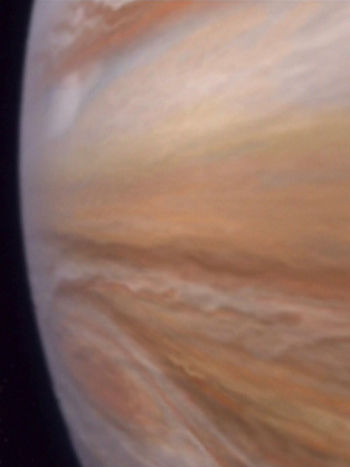
Jupiter (ENT-50)
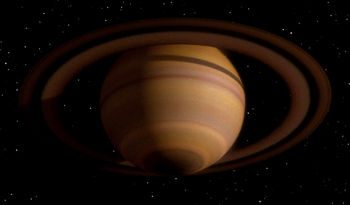
Saturn (TNG-101-102)
Gas giant. Age ranges from 2-10 billion years. Diameter is 50,000 to 140,000 km. Typically located in the Cold Zone of a planetary system. Surface radiates some heat and is tenuous and comprised of gaseous hydrogen and hydrogen compounds, atmospheric zones vary in temperature, pressure and composition. May contain hydrocarbon-based life forms.[1]
References
- 1. Star Trek Star Charts. Book. Pocket Books. October 2002.
Quadrants

One quarter of the galaxy. The four quadrants were designated by the Greek letters Alpha, Beta, Gamma, and Delta, and were arbitrarily divided using Earth as a reference point. As a result, Earth, and the sector it occupied, fell in the Alpha Quadrant, while the sector containing Vulcan and Andoria fell in the Beta Quadrant. The Gamma and Delta Quadrants remained largely unexplored through the 25th century, though knowledge of those regions was greatly increased thanks to the Bajoran wormhole and the U.S.S. Voyager NCC-74656, respectively.[1]
› Continue reading
Milky Way Galaxy

Milky Way (TOS-01)
The Milky Way was a spiral galaxy approximately 100 thousand light years across, divided into four quadrants, designated by the Greek letters Alpha, Beta, Gamma, and Delta, and were arbitrarily divided using Earth as a reference point. As a result, Earth, and the Sol Sector, fell in the Alpha Quadrant, while the Vulcan and Andorian Sectors fell in the Beta Quadrant. The Gamma and Delta Quadrants remained largely unexplored by the early 25th century, though knowledge of those regions was greatly increased thanks to the Bajoran wormhole and the U.S.S. Voyager NCC-74656, respectively.[3] The galaxy was surrounded by a nearly-impenetrable energy field, dubbed the Galactic Barrier, with unpredictable neurogenic properties.[1, 3] Likewise, the core of the galaxy is surrounded by a distinct but related field, dubbed the Great Barrier.[2, 3]
› Continue reading
Sector 005
Also known as the Vulcan Sector, Sector 005 was adjacent to the Terran Sector, which was also known as Sector 001.[3] Inhabited systems include the 40 Eridani System.[1, 2]
References
Asteroid

Asteroid (TOS-58)
Small celestial body composed of rock and metal, typically much smaller than a planet, often irregularly shaped. Asteroids often occurred in orbital belts within a star system, sometimes the debris remaining from the formation of that system, other times the fragments remaining from the disintegration of a planet. Larger asteroids were sometimes called planetoids.
In 2267, the U.S.S. Enterprise NCC-1701 attempted to divert an asteroid that was on a collision course with an inhabited planet.[1] A Type-C asteroid crashed into an unpopulated continent of Penthara IV in 2367, threatening an ecological disaster until the U.S.S. Enterprise NCC-170-D helped dispel its dust cloud.[2] Another asteroid from the Pelloris Field threatened Tessen III with the same type of destruction in 2368 before it was vaporized by the same starship. Its nitrium alloy core prevented a tractor beam lock, and it was undamaged when hit by photon torpedoes. It was later discovered to be the home of metal parasites.[3]
› Continue reading
Data
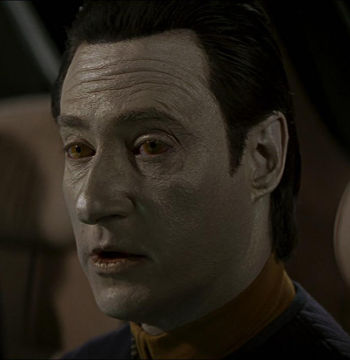
Data (ST-08)
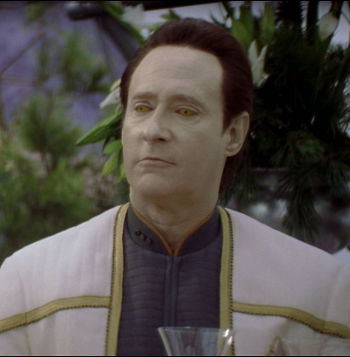
Data (ST-10)
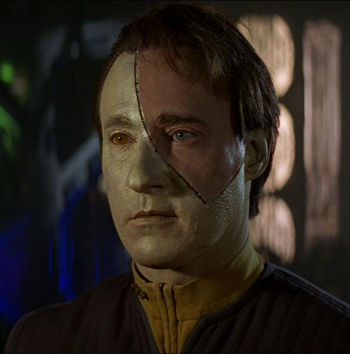
Data assimilated (ST-08)
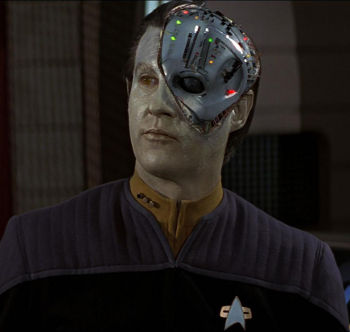
Data (ST-08)
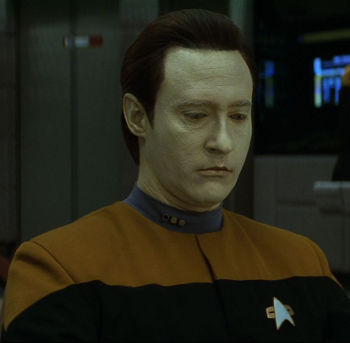
Data (ST-07)
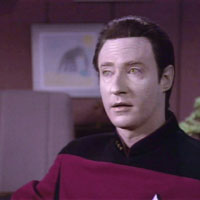
Data (TNG-237)
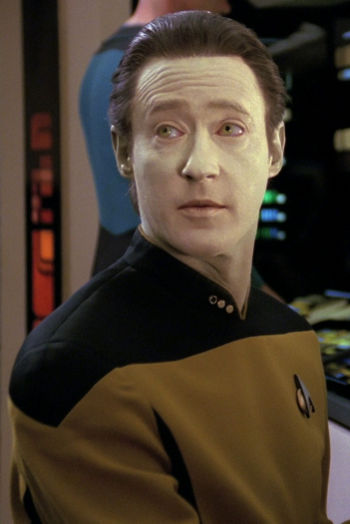
Data (TNG-165)
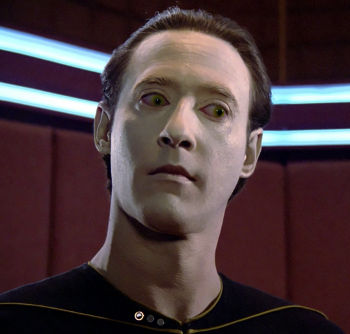
Data (TNG-108)
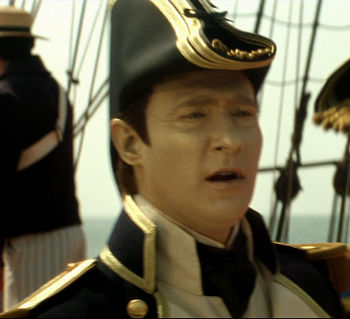
Data on holodeck (ST-07)
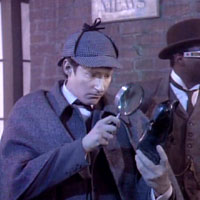
Data on holodeck (TNG-129)
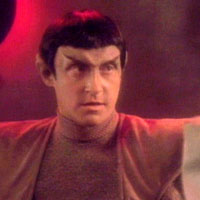
Data disguised as a Romulan (TNG-207)
Data was an android created by the renowned cyberneticist Dr. Noonian Soong on a Federation colony at Alpha Omicron in the 2330s. He was deactivated and left on the surface when the colony was attacked by the Crystalline Entity, only to be reactivated some time later by the crew of the U.S.S. Tripoli NCC-19386, which was investigating the colony’s disappearance.[3]
Orions

Orion female (ENT-80)
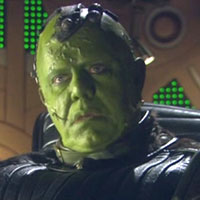
Orion male (ENT-93)
Slave traders who dealt in “green animal women.”[1] The supposed “animal” nature of Orion women, however, was discovered to be a pretense by the Enterprise NX-01 in 2154; Orion women produced extremely powerful pheromones, which they were able to use to disable Human women and make men—both Human and Orion—susceptible to suggestion. Vulcan women were apparently immune, while Denobulan men were sent into an unnatural sleep cycle.[3] Orion territory was located adjacent to the Klingon Empire, and the region where Klingon and Orion territory met was known as the Borderland.[2]
Notable Orions:
- Harrad Sar[3]
- Navaar[3]
References
- 1. “The Cage.” Star Trek, Episode 0. Television. 1965 (Unaired).
- 2. “Borderland.” Star Trek: Enterprise, Episode 80. 29 October 2004.
- 3. “Bound.” Star Trek: Enterprise, Episode 93. 15 April 2005.
Humans
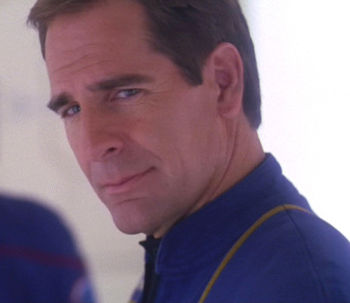
Jonathan Archer (ENT-31)
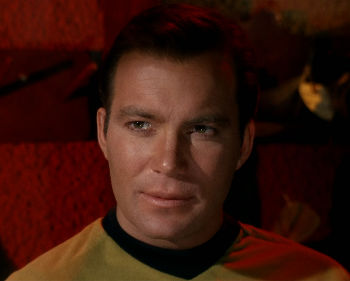
James T. Kirk (TOS-05)
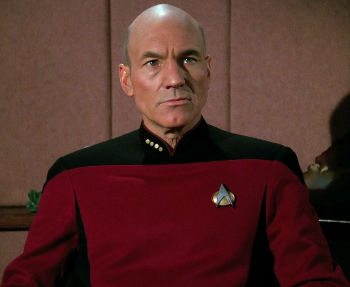
Jean-Luc Picard (TNG-165)
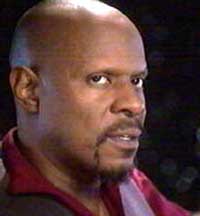
Benjamin Sisko (DS9-541)
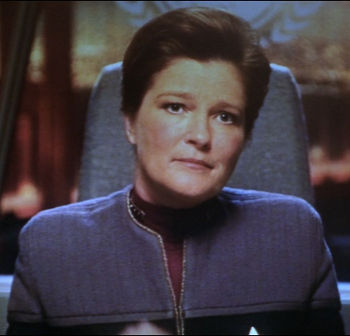
Kathryn Janeway (ST-10)
Species originating on Earth. According to the Talosians in the 2250s, “The customs and history of [Humans] show[s] a unique hatred of captivity. Even when it’s pleasant and benevolent, [they] prefer death. This makes [them] too violent and dangerous a species for [the Talosians’] needs.” The Talosians had scanned the U.S.S. Enterprise NCC-1701‘s databanks, and had gleaned quite a bit of information about Human history.[1]
Notable Humans
References
- 1. “The Cage.” Star Trek, Episode 00. Television. 1965 (Unaired).
- 2. “Where No Man Has Gone Before.” Star Trek, Episode 01. Television. 22 September 1966.
- 3. “Encounter at Farpoint.” Star Trek: The Next Generation, Episodes 101-102. Television. 28 September 1987.
- 4. “Emissary.” Star Trek: Deep Space Nine, Episodes 401-402. Television. 4 January 1993.
- 5. “Caretaker.” Star Trek: Voyager, Episodes 101-102. Television. 16 January 1995.
- 6. “Broken Bow.” Star Trek: Enterprise, Episodes 01-02. Television. 26 September 2001.
Denobulans
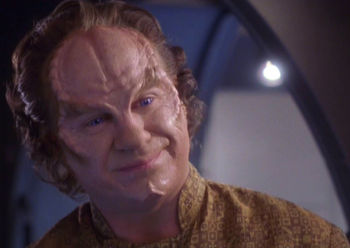
Denobulan male (ENT-06)
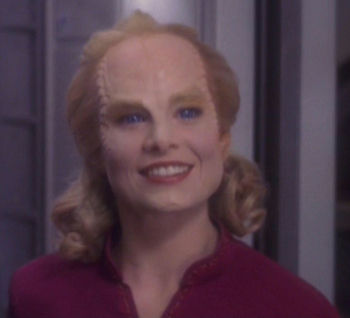
Denobulan female (ENT-40)
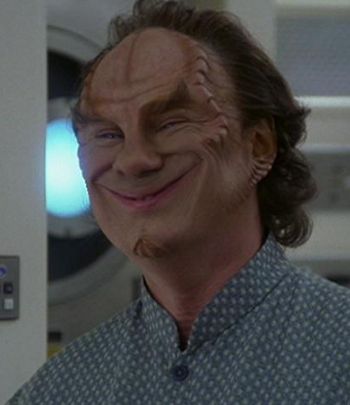
Denobulan smile (ENT-01-02)
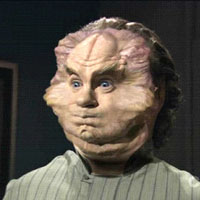
Denobulan defense mechanism (ENT-79)
Humanoid species. The Enterprise NX-01‘s Dr. Phlox was Denobulan.[1] The Denobulans hailed from the Denobula Triaxa System[2] (Iota Bootis),[6] and only required six days of sleep per year (though, according to Phlox, two would suffice).[3] It was common for Denobulans to have multiple spouses—Phlox had three wives, who, in turn, each had two other husbands. Mating among this species was, apparently, very complex compared to human traditions.[4] Most Denobulans did not like to be touched.[5]
Notable Denobulans
References
- 1. “Broken Bow.” Star Trek: Enterprise, Episodes 01-02. Television. 26 September 2001.
- 2. TBD. Star Trek: Enterprise, Episode TBD. Television. Airdate TBD.
- 3. TBD. Star Trek: Enterprise, Episode TBD. Television. Airdate TBD.
- 4. TBD. Star Trek: Enterprise, Episode TBD. Television. Airdate TBD.
- 5. TBD. Star Trek: Enterprise, Episode TBD. Television. Airdate TBD.
- 6. “Star Trek: Star Charts.” Star Trek (Uncategorized). Book. Pocket Books. October 2002.
Borg
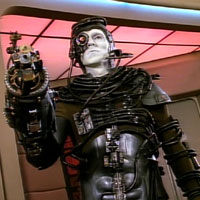
Borg drone (TNG-174)
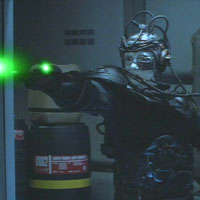
Borg drone (TNG-253)
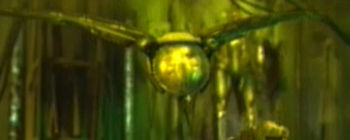
Borg drone (STEXP2)
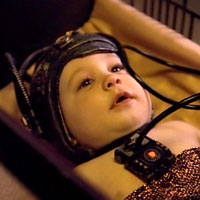
Borg infant (TNG-142)
The Borg were a partially organic, partially cybernetic race who apparently had their origins deep within the Delta Quadrant. The thoughts of the Borg were all joined in a hive-mind, or collective consciousness, and so the entire species operated as one gigantic organism, as if the Borg race was one huge entity and the individual drones and ships merely components of the greater whole. The Borg were technologically advanced and had conquered vast regions of space in their quest for perfection, which involved forcibly assimilating the races and technologies they encountered.[1]
› Continue reading
Categories
- Animated Series (60)
- Articles (28)
- Books (447)
- Cast & Crew (79)
- Comics (22)
- DS9 (328)
- Early Voyages (125)
- Education (5)
- Enterprise (373)
- Excelsior (36)
- Food (19)
- Games (223)
- Klingon (70)
- Library (1,543)
- Logs (593)
- Lost Era (55)
- Medicine (18)
- Merrimac (1)
- Mirror (35)
- Miscellaneous (13)
- New Frontier (54)
- Next Generation (635)
- Original Series (681)
- Personnel (436)
- Places (369)
- Politics (12)
- Recreation (10)
- SCE (41)
- Science (1)
- Shatnerverse (9)
- Ships (455)
- Site Updates (98)
- Starfleet Academy (86)
- Stargazer (42)
- STO (61)
- Technology (45)
- Titan (59)
- To Boldly Go (1)
- TV/Film (214)
- Uncategorized (4)
- Vanguard (76)
- Voyager (236)
- Weapons (27)
- Xenology (54)